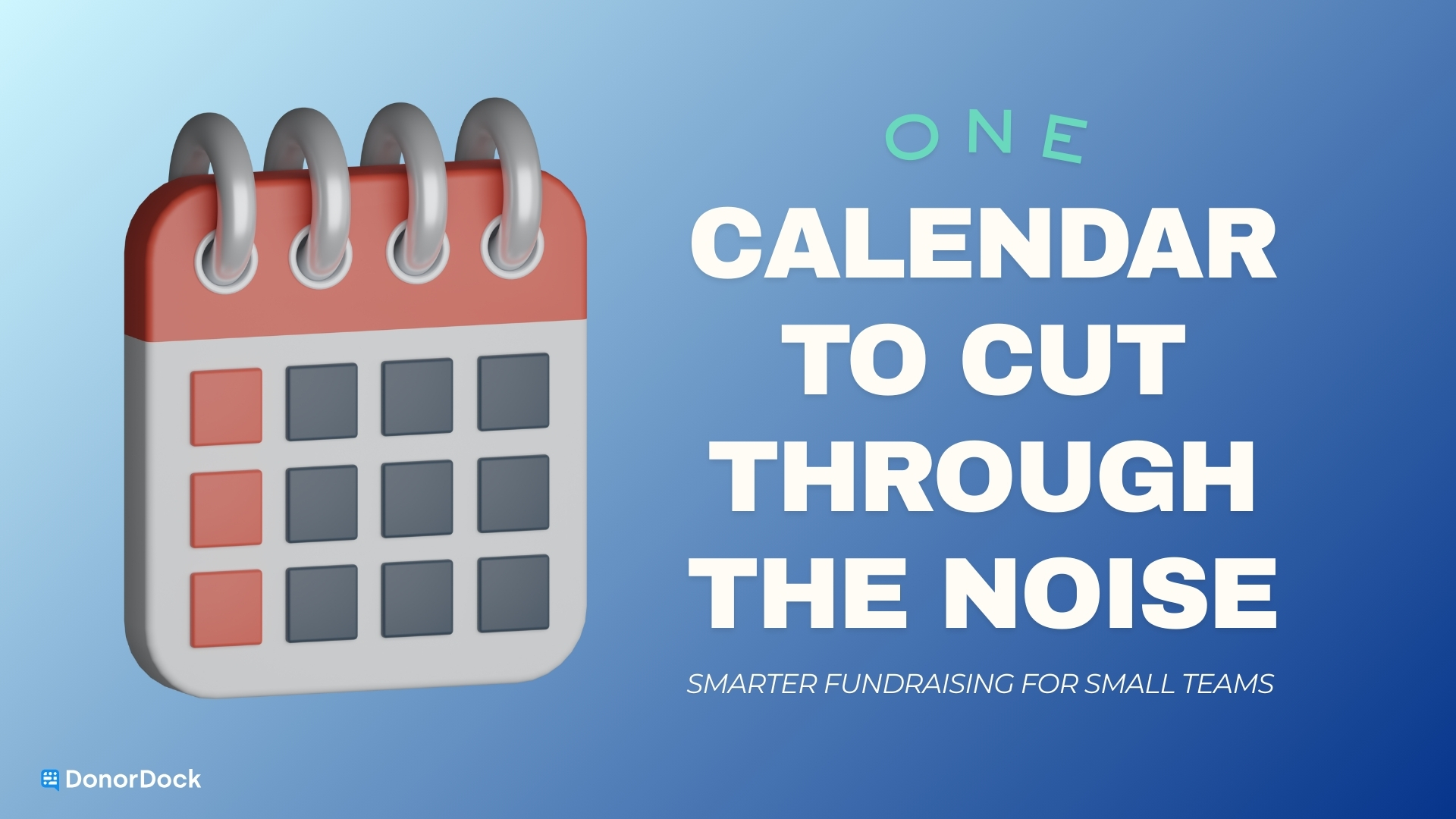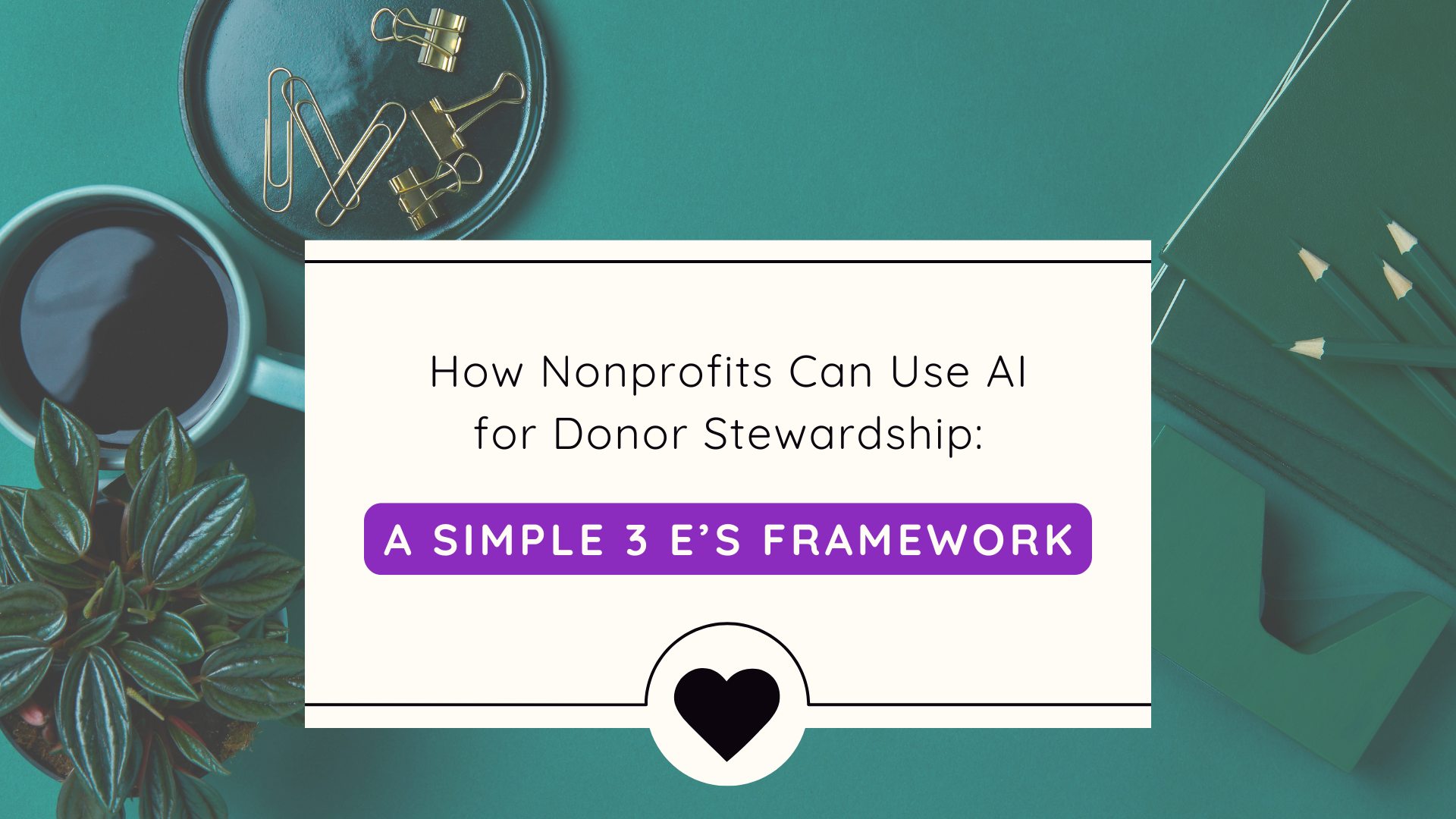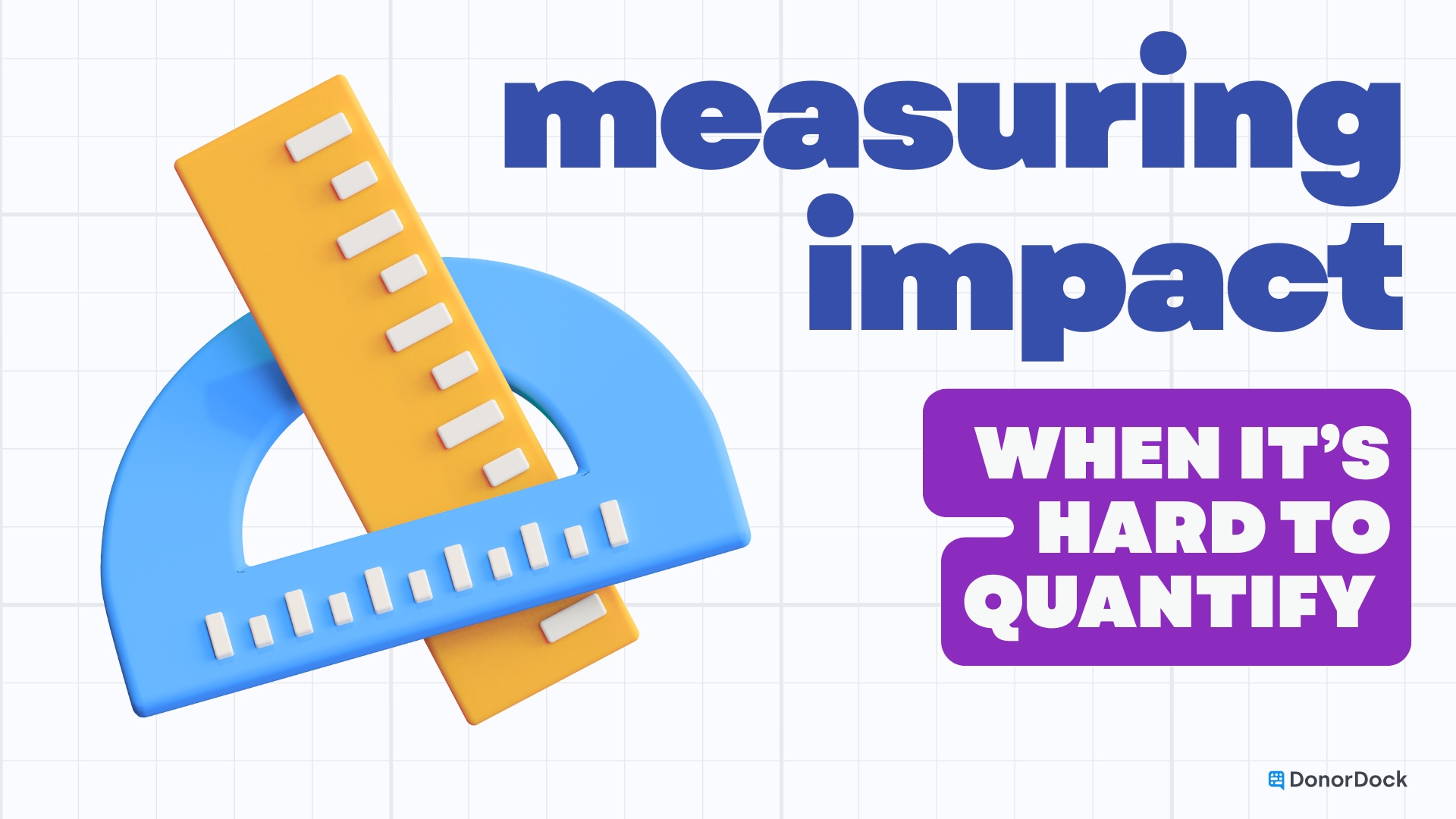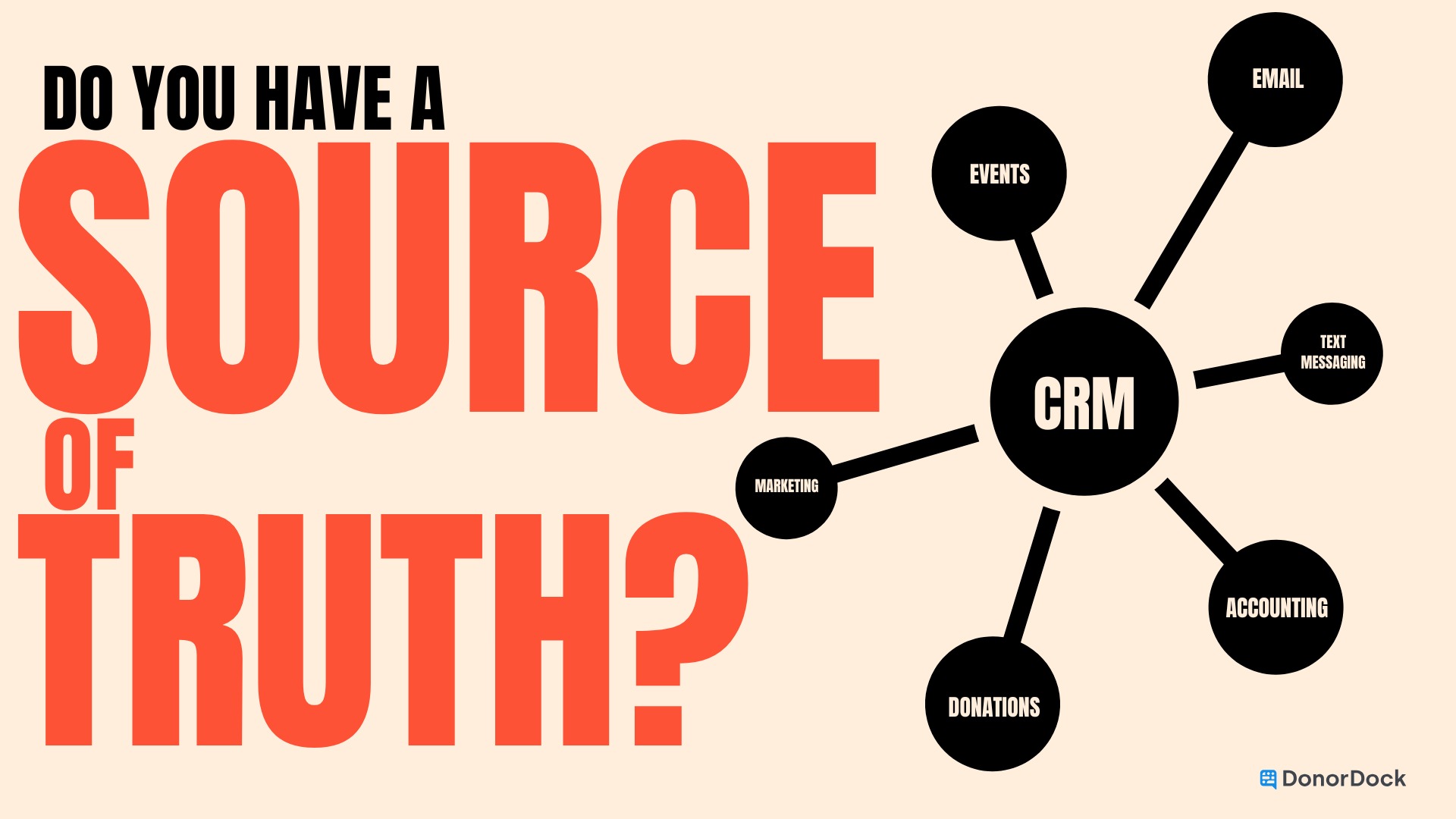If you wear multiple hats, you know the feeling. There’s an appeal to write, social posts to create, a gala night to promote, and a board report breathing down your neck. Meanwhile, your inbox is a jungle. When teams are tiny, splitting marketing and development into separate tracks doesn’t create focus. It creates silos, duplicated work, and mixed messages.
Here’s the fix that consistently helps small and growing nonprofits: run one shared calendar for marketing and development. One plan. One set of priorities. One story your community hears clearly.
Below, we'll break down the benefits for lean teams and how to make it work without adding complexity. We’ll keep it practical and grounded in what moves the needle for fundraising outcomes and your mental load.
Why one calendar beats multiple for small teams
You reduce duplicate work.
When marketing and development own separate calendars, you end up writing two versions of the same message, scheduling overlapping emails, or scrambling to coordinate last minute. Integrated teams save time because one person can oversee the communications arc for both functions. Nonprofit Hub notes that integrating efforts prevents duplication and lets you pool scarce staff time for higher value outreach.
You stop sending mixed signals to donors.
A donor who gets a “save the date,” a grant outcome update, and an urgent appeal in the same week won’t feel cared for. They’ll feel marketed to. A unified calendar forces message discipline. It helps you reveal the right story, to the right segment, at the right time, so each touch builds trust instead of noise. Advisors who study alignment across teams point out that joint planning strengthens every stage of cultivation, from awareness to stewardship.
You protect limited capacity.
Lean shops don’t have the luxury of redundant planning. Donor counts continue to slip, especially among smaller donors. That means your best lever is better retention through coordinated, relationship-centered touches, not more scattershot tasks. A single calendar helps you choose fewer, better moments that lift retention.
You ease burnout by creating rhythm.
When the plan lives in one place, you can batch work, spot heavy weeks in advance, and say no to extras that don’t fit the story. Planning advocates also flag a real wellness benefit: content planning saves time, reduces burnout, and prevents missed moments that lead to fire drills. That’s oxygen for two-person teams.
Bottom line: a unified calendar helps you cut through the noise, keep donors on a coherent journey, and guard the energy of a small staff.
What small teams gain in hard fundraising outcomes
Higher new-donor activation and repeat giving.
Retention has been sliding for years, with new-donor retention especially fragile. FEP reported only 13.8% of new donors retained year to date in Q3 2024. That kind of fragility means your early post-gift touches must be tightly sequenced and coordinated across channels. One calendar keeps welcome, impact, and invite messages in lockstep, which is exactly what improves repeat giving.
More efficient reach per message.
With one plan, your messages can ladder up. A story introduced on social becomes the hook in your appeal, which becomes the donor update next month. You’re not “creating more,” you’re repurposing better. Nonprofit pros who integrate marketing and fundraising consistently report better use of scarce staff time and stronger results without headcount growth.
A story arc that builds trust.
When development and marketing plan together, you can weave a single narrative across updates, appeals, and gratitude. That unity is what builds a relationship instead of a transaction. Creative fundraising strategy shops describe this as aligning around a culture of philanthropy, not separate calendars.
How to run one calendar without adding work
You don’t need a fancy template, just agreement on the few things that matter. Here’s the lean version to use with small teams.
1) Pick one owner and a weekly rhythm
- One person owns the calendar. Collaboration stays, ultimate accountability simplifies decisions.
- Hold a 20-minute standup each week to scan the next 3-5 weeks. Move items to avoid collisions. Kill anything that doesn’t serve this month’s donor story.
2) Build a single story arc per month
- Choose one program or outcome to spotlight for 30 days.
- Tell it three ways: a proof point, a person, and an invitation.
- Reuse assets. The photo from the program update becomes the visual in your appeal and the thank you email.
3) Tie every message to a segment and a purpose
Give each slot on the calendar four fields: segment, purpose, message, channel. If any entry is missing, the item isn’t ready.
- Segment examples: prospects, first-time donors, recurring, mid-level, major, lapsed.
- Purpose examples: welcome, thank, show impact, invite, upgrade, reengage.
- For a quick primer, scan DonorDock’s overview of six donor segments and journeys.
5) Guard white space to protect capacity
- Block 1 week each quarter with no outbound appeals. Use it to capture impact stories, thank donors, and reset data.
- Say no to ad hoc adds that don’t serve the month’s story. If it’s urgent, it takes the place of something else.
Pro tip: one calendar is less about posting everywhere and more about doing the next right thing for each segment. Fewer messages, more meaningful connection.
What to measure so you know it’s working
When you switch to one calendar, watch a few metrics that matter to small teams.
- New donor 90-day retention. If the unified plan is sequencing touches well, this should rise. FEP’s trendlines show how fragile this window is, so any lift here is a big win.
- Upgrade rate to recurring. Better coordination usually drives small but steady upticks.
- Collision count. Track how often you prevent two emails to the same segment in a 72-hour window. Lower is better.
- Staff time saved. Estimate creation hours per message before and after unifying. Integrated planning reduces duplication and saves cycles that you can put back into relationships.
If you want a practical framework to run these reviews, the Smart Steward Method’s Evaluate phase is designed for quick audits that keep your plan nimble. Here’s the explainer on the relationship loop and how to revisit what’s working each cycle.
A quick word on the stakes for small donors
Why be so disciplined about message flow? Because the ground is shifting under small-donor giving. Coordinated storytelling and timely thank yous are essential to keep donors on the journey with your organization.
If you’re feeling that squeeze, you’re not alone. The best response isn’t more channels. It’s more focus, less frenzy.
Bring it home: your next three moves
- Name one owner for a shared marketing and development calendar and schedule a 20-minute weekly scan.
- Choose one monthly story and map three touches that serve different segments.
- Run a 60-minute Evaluate using the Smart Steward Method to clean up collisions and sequence your next welcome and thank-you touches. Start with DonorDock’s quick guides to donor segmentation and donor retention to align segments and goals.
One calendar helps you cut through the noise, ease your mental load, and focus on what matters most: real relationships that sustain your mission.
Ready to make it simpler? Start building meaningful donor relationships today. Schedule a Demo and see how DonorDock helps small teams plan smarter and steward better.












